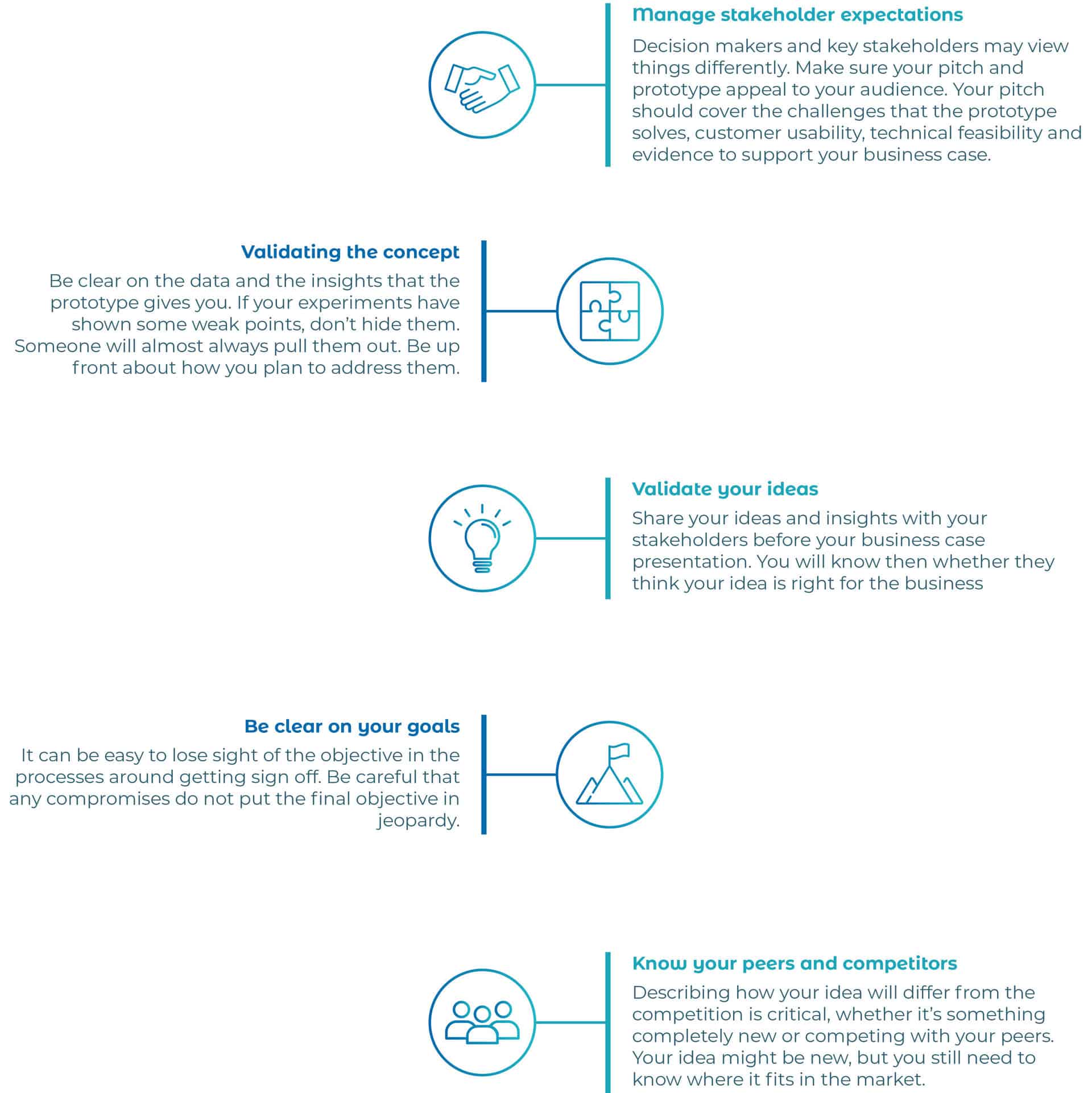
Are you looking at technology to keep your business ahead of the competition? You aren’t alone. Businesses are investing in digital transformation to help them develop in their sector and stay ahead of competitor and consumer trends.
Having an idea, concept or vision for your digital journey is just the start. The journey between concept and delivery can be a difficult one. Depending on the size and complexity of your organisation there may still be a number of barriers to overcome, such as securing buy-in from relevant stakeholders and getting the required funding and resourcing.
When you are about to invest time, money, and energy into a digital product, you need to be sure it will meet your needs, and ultimately deliver ROI. Having a working prototype will speed up your project, reduce risk, and minimise uncertainty. Executed well, a prototype can do a far better job of illustrating ROI than any slide deck or spreadsheet ever could.
Below are just some of the ways creating a prototype can benefit you and your business.
Conducting user research
When trying to get your idea off the ground, being able to test it with your target user group will help validate your concept. Prototyping is a great way to test your concept’s usability. Users can often find it hard to imagine a product so getting feedback on a new offering you are planning can be challenging. A well-executed prototype allows you to test the practicability of the current concepts and even investigate how users think and feel about your product. Not only that, but you canobserve theparts of the product they use, and what they disregard. That, in turn, will help youshape the service itself and can be a more efficient way of guaranteeing the best return on your investment.
Driving down costs
Having a working prototype helps to reduce risk and minimise uncertainty as it allows you to see problems with your idea early in the development process. It brings clarity to what you are going to build,allowing stakeholders to see whatyouintend to create. This helps remove any issues and helps mitigate risk before the build begins where changescanbeginto become expensive.
Benefits of external partners
Identifying which of the elements of a concept to bring to life requires a careful balance of what is realistically achievable in the timeframe vs. what will give you the quickest wins in terms of demonstrating ROI. An external expert can help you workshop your ideas and create a full roadmap for your prototype.
Another common challenge is talent. Finding the right skills and expertise internally to work on the project, as well as making sure they have both the time and space to deliver, can prove difficult. It’s important to find the right balance between utilising what resources are available internally and knowing when to leverage help from strategic external partners.
Gaining stakeholder buy in
It can be challenging to get them to buy into your concept without a visual, working prototype. With a prototype, stakeholders benefit from a tangible concept they can use and test. It will help them visualise the end project and the potential ROI your idea could bring. How can you get your key stakeholders and influencers on board? See Softwire’s top tips on moving your prototype forward:

If you have an idea you would like to take from paper to prototype, Softwire can help. We can take your idea and deliver a working prototype in just 3 weeks. If you’re ready to bring your idea to life, book your workshop now.


